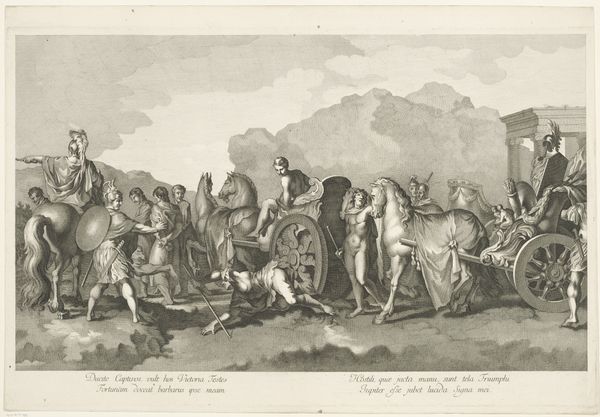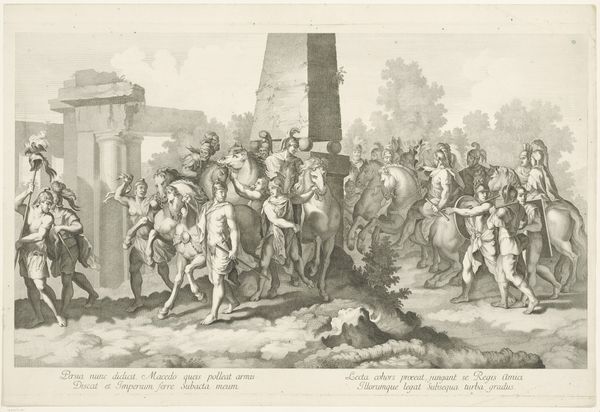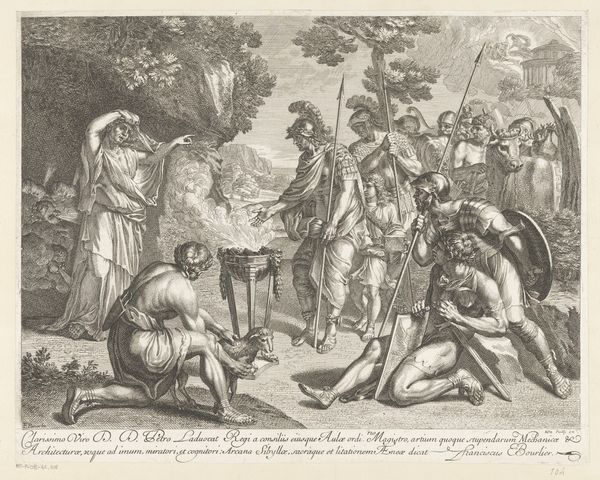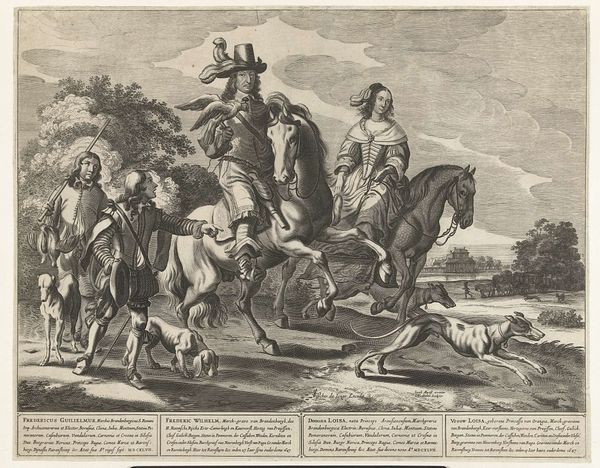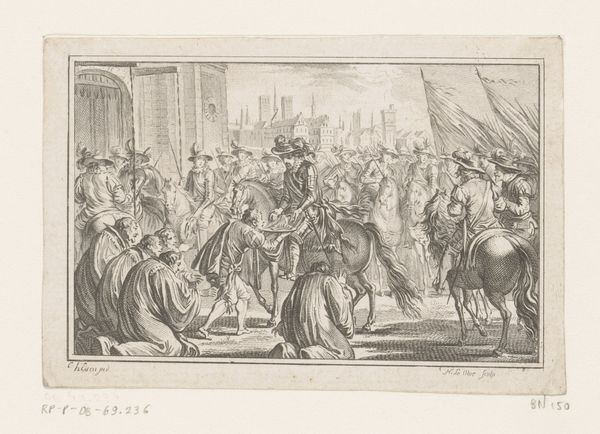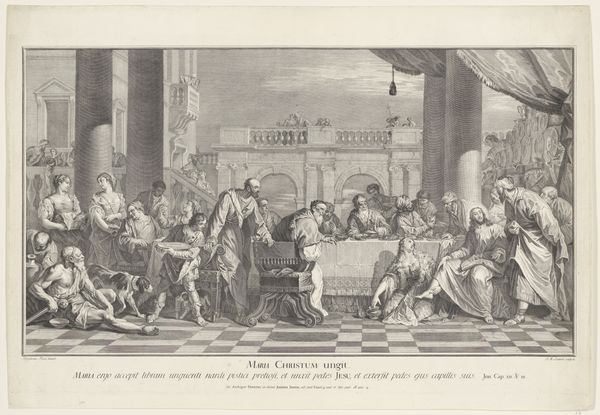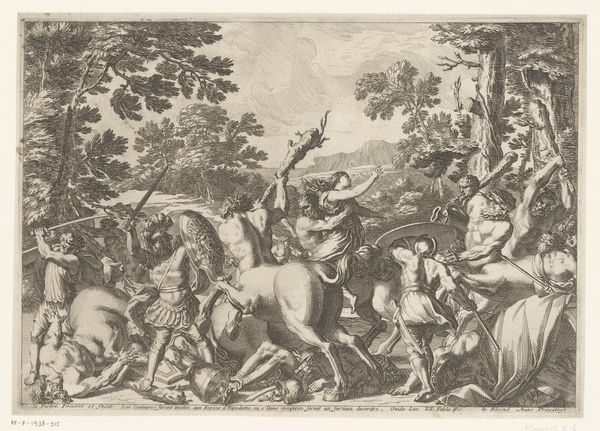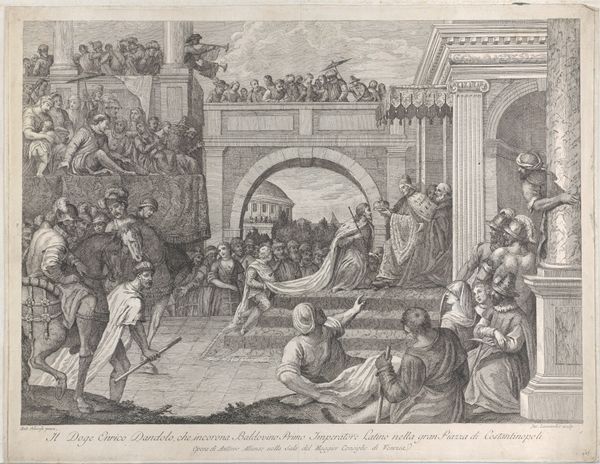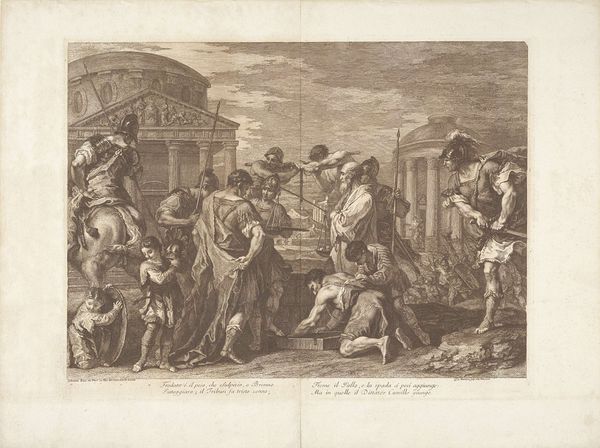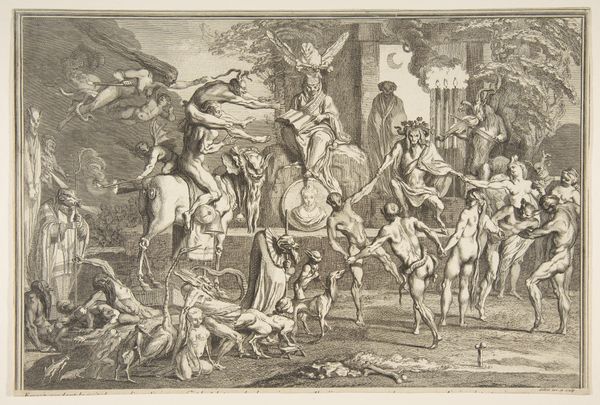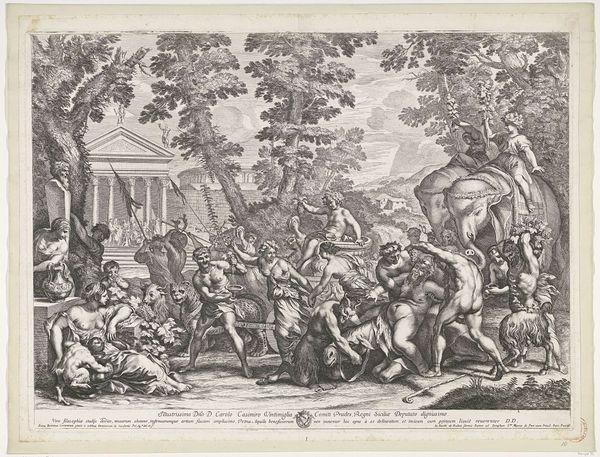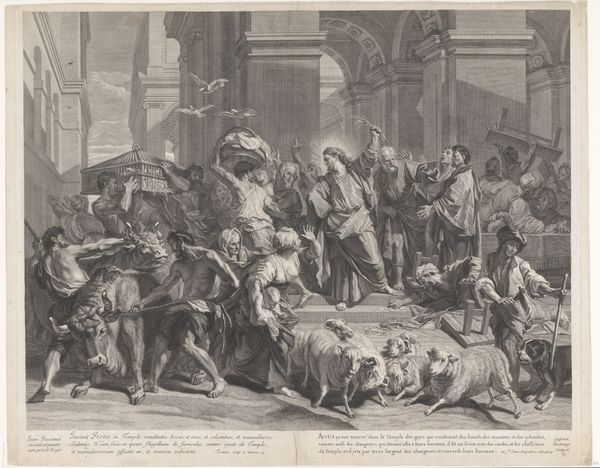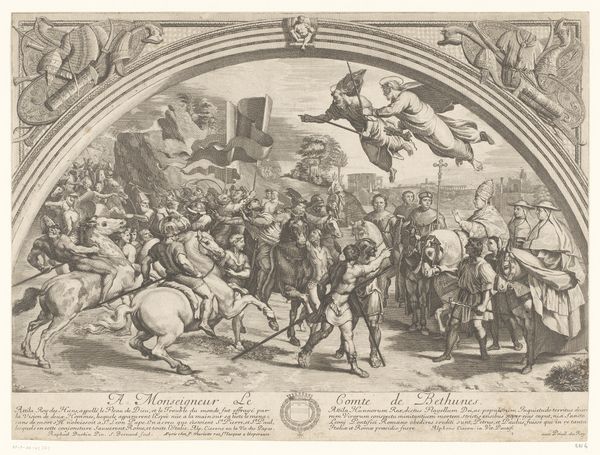
print, engraving
#
baroque
# print
#
old engraving style
#
landscape
#
classical-realism
#
figuration
#
history-painting
#
academic-art
#
engraving
Dimensions: height 660 mm, width 966 mm
Copyright: Rijks Museum: Open Domain
Editor: This engraving, titled "Militaire stoet met Alexander de Grote op triomfwagen," which translates to "Military Procession with Alexander the Great on a Triumphal Chariot," was created sometime between 1660 and 1736 by Domenico Rossetti. It has this old engraving style which makes me wonder how something like this was mass-produced. What are your thoughts on the process and materials in this image? Curator: This print certainly makes one consider the labor involved. The level of detail achieved through engraving suggests a significant investment of time and skill. Notice how the lines, meticulously etched into the plate, create the illusion of depth and texture. It’s worth pondering the socio-economic context too – who was commissioning and consuming such images? Was this piece made to spread knowledge or reinforce ideas? Editor: That's a great point! It seems so meticulous. Did prints like this replace more "artistic" mediums, and how did they change society through distribution and cost? Curator: Precisely! The rise of printmaking democratized imagery, making historical and mythological narratives accessible to a wider audience. Consider the cultural work this image performs – presenting Alexander as a symbol of power and conquest. And think about how materials available—the specific metals and papers used—impacted the image's longevity and distribution. Editor: It's fascinating how the printmaking process, a seemingly simple technique, becomes a lens for understanding economic shifts and the spread of ideologies. The fact that a piece of work about Alexander the Great could be available to common people is actually amazing to consider! Thank you! Curator: Indeed! By examining the material conditions of its production and circulation, we gain a richer appreciation for the artwork’s role within its specific historical moment.
Comments
No comments
Be the first to comment and join the conversation on the ultimate creative platform.
